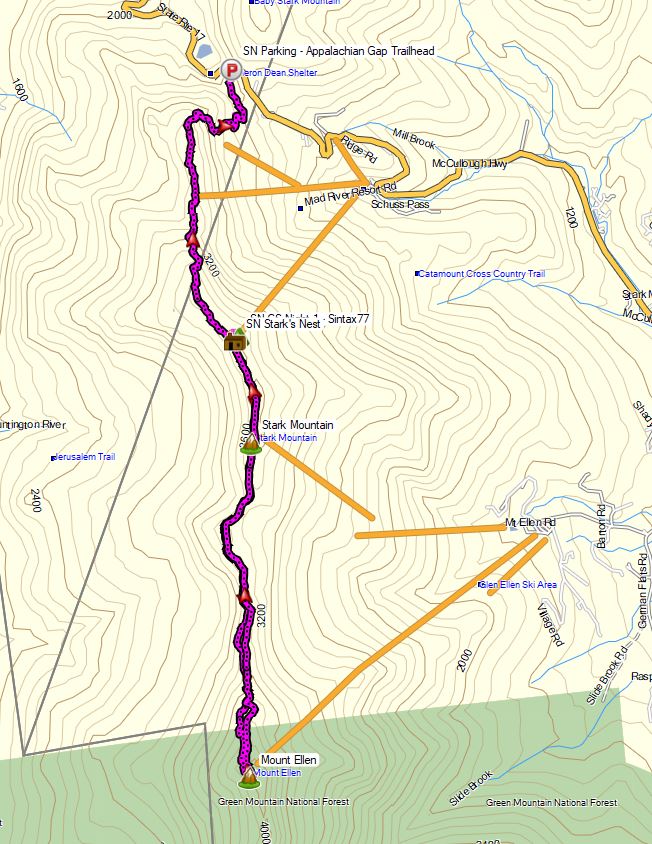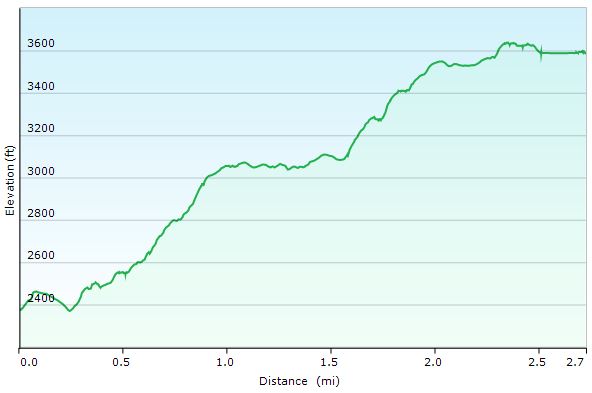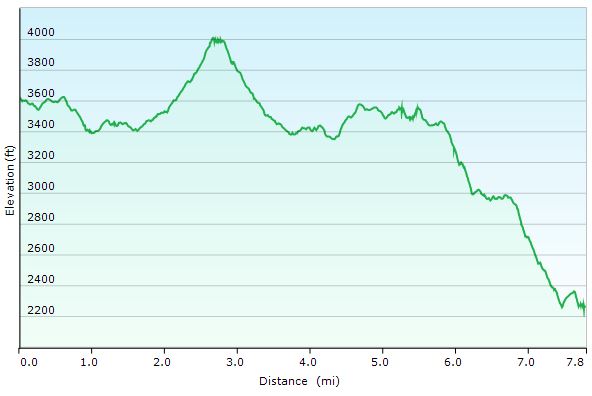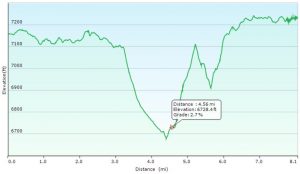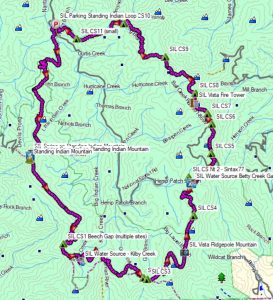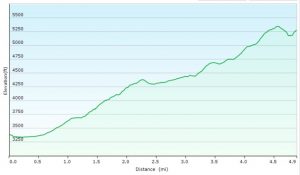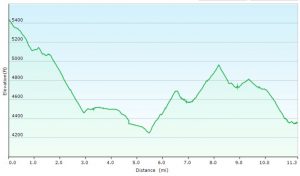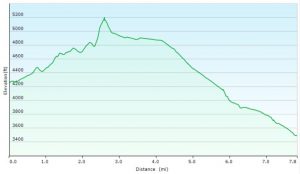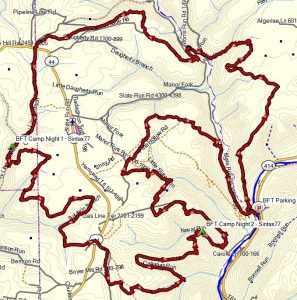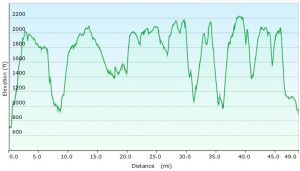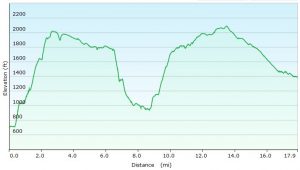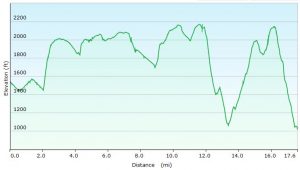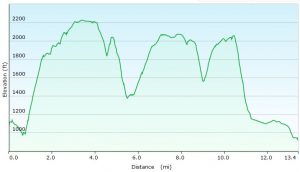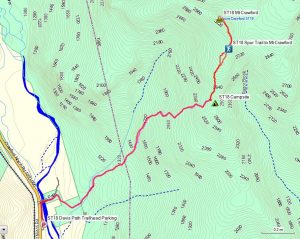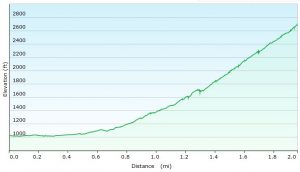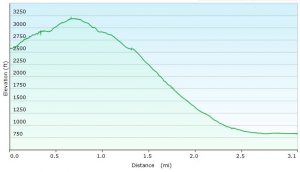Section Hiking on the Vermont Long Trail – Appalachian Gap to Lincoln Gap.
For this backpacking trip, my dog Denali and I will be doing a 2 day, 1 night camping trip in Northern Vermont. The specific area we’ll be camping near is called the Stark’s Nest, which lies on a section of the Long Trail between Appalachian Gap and Lincoln Gap, about 40 minutes west of Montpelier, VT.
As seen in the video, use this link to get your free camping pillow from Outdoor Vitals for a limited time.
The Vermont Long Trail is a 273 mile, long distance hiking trail that runs the entire length of Vermont, from the sothern border with Massachusetts all the way up to the Canadian border to the north. The first hundred miles or so in the south coincide with the Appalachian Trail as well. I’ll be backpacking and camping just a short taste of the Long Trail – a roughly 8 mile section in the North Country of Vermont on a combination of private land and Vermont’s Green Mountain National Forest.
GPS Data for this trip and many others can be found on my Trip Data Page. Includes full track data for each day, and way-points for campsites used, water sources, etc.
Trailhead Used: Appalachian Gap Trailhead Parking Area – 44°12’39.7″N 72°55’53.5″W
This is a large, paved parking area just off of Vermont SR17. The Vermont Long Trail South (which I took in the video) can be found on the opposite side of the road. The Long Trail North (which I didn’t take) is located right in the corner of the lot, by the guard rail.
Trails Used & Itinerary, Day 1
- Park at the Appalachian Gap Trailhead Parking Area
- Take the Vermont Long Trail South (located on the other side of the road. Look for the white blaze
- Arrive at Stark’s Nest warming hut and grab some water from the rain barrel.
Note: Stark’s Nest is a ski warming hut. During the winter, this is a hut used to take a break and warm up in between ski runs at Mad River Glen Ski Resort. While this is private property, it is kept open and available to hikers year round as a place to take a break, or camp for the night while hiking the Vermont Long Trail. There is a rain barrel out front that makes for an excellent water source. It’s essentially a fully enclosed cabin that makes it a great option for riding out storms and bad weather. There is a composting outhouse nearby, across from the cabin in the woods opposite the cabin. - Set up camp a little ways down the ski slope near Stark’s Nest
Day 1 Mileage: 3 miles
Day 1 Gross Elevation Gain: 1,501′
Day 1 Gross Elevation Descent: 283′
Trails Used, Itinerary Day 2
- Leave camp and head back uphill to the Stark’s Nest.
- Continue south on the Vermont Long Trail.
- End at the ski lift area on Mt Ellen for a break and some views.
- Backtrack out the way you came, via the Long Trail North.
- Arrive back at the Stark’s Nest.
- Breakdown camp, pack up and replenish water supplies.
- Backtrack out on the Vermont Long Trail North.
- Arrive back at the Appalachian Gap Trailhead Parking area.
Day 2 Mileage: 8 miles (5 round-trip for Mt Ellen, 3 for the hike out from Stark’s Nest)
Day 2 Gross Elevation Gain: 1,566′
Day 2 Gross Elevation Descent: 2,919′
Notable Backpacking Gear Seen & Used
- Notch Classic Operator Hat
- Gregory Optic 48 Backpack
- Dutchware Argon Pack Cover
- Kelty Salida 2 Tent
- Big Agnes Q-Core SL Sleeping Pad
- Therm-A-Rest Z-Lite Sleeping Pad
- Hammock Gear Burrow 40 top quilt
- Alite Mayfly Camping Chair
- Katadyn BeFree Water Filter
- HydraPak Seeker Water Bladder, 2L
- DIY Alcohol Stove made by viewer Kieth
- DIY Alcohol Stove made by viewer Triple Nickle Outdoors on YouTube
- Toaks 450ml Titanium Cup
- Light My Fire Mini Fire Steel
- Platypus 2L Water Bladder
- Sea To Summit Alpha Light Long Spork
- Vermont Long Trail Map, by Green Mountain Club
Notable Dog Backpacking Gear Seen & Used
- 2 Piece Dog Sleeping Bag made by Pim at JustHanging.eu
- OutdoorMaster Bungee Dog Leash
- One Tigris Dog Pack – Canvas Dog Backpack
- Sea to Summit X-Bowl
Collapsible Dish
- Dog-Gone Dish – Collapsible Travel Pet Dish
- Trail Buddy Treats
– Freeze Dried Dog Treats for Hiking
Coghlan Bear Bell
- Nite Ize Nite Dawg LED Dog Collar Cover
- Kevlar 2.2 Tree Straps from Dutchware Gear, used as an ultralight dog leash / lead around camp.
- Weight rated / climbing grade carabiner
(don’t trust your dog with the cheap key chain grade ones).

